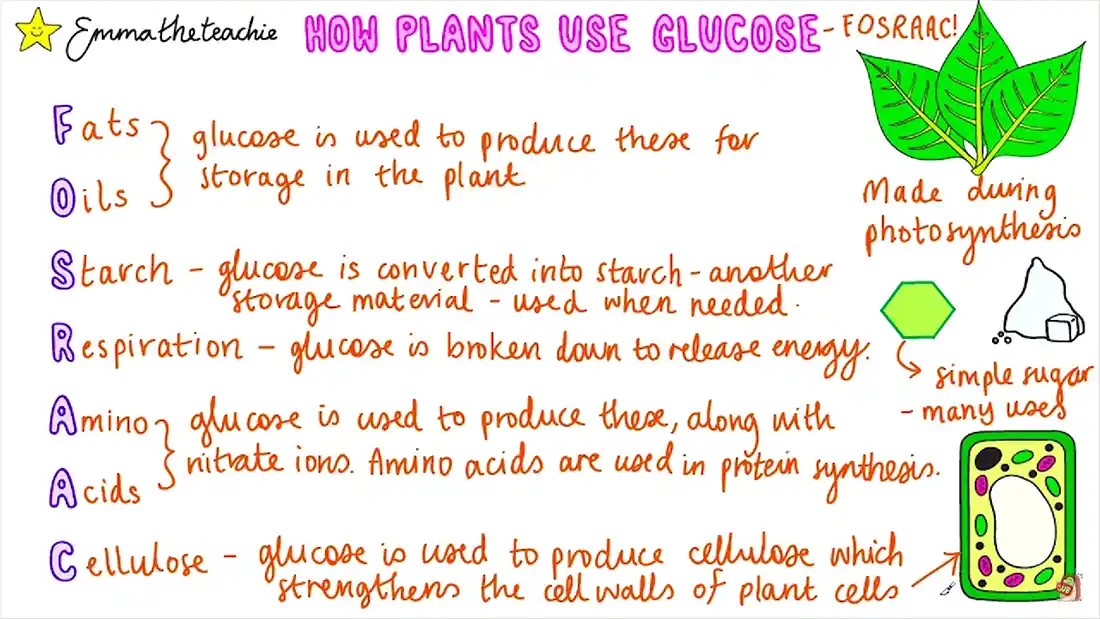

Glucose, photosynthesis, oxygen, energy, respiration, fats, cellulose, starch, storage.
Plants go through the process of photosynthesis, where the sunlight hits the plant, and it uses this to convert (along with carbon dioxide) into glucose and oxygen.
But what do the plants use the glucose for? Let's take a look.
Firstly, glucose is a natural energy source, and plants can use it in respiration to break down the substrate and create energy. This energy is used for cellular activities, like cell division and protein synthesis.
Next, while glucose is a carbohydrate, it can be used to make another type of energy in the form of fat. The glucose can also combine sugars with nitrate to make amino acids, used to make proteins.
The glucose can also be used to make starch, which is used for storage purposes.
Lastly, plants making excess glucose can link together to form the complex carbohydrate cellulose.
The following still is from a video on glucose uses, with the following details:
Please click on the image to view the video.

What's that you say? You can have that in places on your body? That's right. Cellulose is a main feature of plants, as it is kind of like a skin. Trees create loads of it, as it forms the bark on the outside. In smaller plants, it forms the wall of each cell.

While cellulose is abundant in the cells of plants, as it creates a thick skin. Trees create even more of it to form bark, an external integumentary system to protect it. This is also present in the human body, and can cause illness if untreated or maintained.
As glucose is stored, and is used to help plants grow, its very much needed in bulbs. Each year you have bulbs grow in your garden. And each year, they flower and then die off. Then they lay dormant for a few months during the winter, so where do they store all the glucose? Inside the bulb itself. When they're growing and flowering they are storing glucose in the bulb, ready for growth in the next year.
So your daffodils and crocus plants are growing through respiration of glucose.
Plants also regulate the amount of glucose that is stored, made or used during the day and night, and adapt to their environment. So, if it's too cold, the plant won't grow as well.
Magnesium is a metallic chemical element, so why is it needed for plants? Well, much like the iron in your blood is needed to create new red blood cells, magnesium is needed in plants to help chlorophyll photosynthesise. With a magnesium deficiency in a plant, leaves may go yellow, or die off completely.
Keeping plants replenished with magnesium isn't difficult, but certain soils can affect it, and if it rains, it may leach the magnesium out of the soil, so a deficiency may become present. Along with this, if there are high amounts of potassium, another chemical element needed for the plants, it may take this instead of magnesium.
The best way to provide magnesium in the soil is to provide a good source of compost. Organic is best if you can (recycle your plants by creating a compost bin). The compost preserves moisture and keeps nutrients from being leached. There are other methods, like spraying the leaves with a magnesium-rich formula, or by using Epsom salts on the soil, but these methods have been shown to be less effective.
Disclaimer | About Me | Sitemap
Website design by SyntaxHTML.



Blue icons adapted from icons courtesy of Smashicons.com